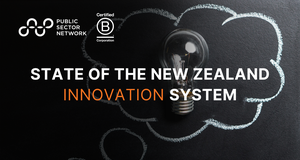The acceleration of digital technologies, along with the need to embed wellbeing and other elements into a continuous learning approach, means that formal classroom learning is no longer the accepted practice. Capabilities such as co-design and community engagement are really important now, so much so that formal learning is no longer enough to provide the level of responsiveness and adaptation needed to meet the challenges of constant change.
Embedding wellbeing into your organisation
When embedding wellbeing into organisational culture, it is not enough to have this wellbeing be just for employees. For a successful implementation, the whole system, including the leaders of the organisation need to role model wellbeing in their day-to-day practice. As such, it is not enough to simply implement a wellbeing strategy as a once and for all solution. The solution needs to be one that is both fluid and flexible, forever shifting with the needs of the organisation.
In order to integrate wellbeing, an organisation needs to focus on more than just delivering training.
Martine St-Louise, A/Director, Leadership, Performance and Talent Management at Canada Border Services Agency gave us an insight into how a 2018 evaluation lead to a more holistic approach to skills and wellbeing within the Canadian organisation.
Some of the recommendations from the evaluation included “establishing a learning steering committee and conducting a learning needs analysis (LNA).” The LNA in particular was about “really looking at the skills, knowledge and behaviours required to meet our future and current business needs.” To discover what those needs were, they conducted interviews across the board, and developed a corporate learning plan. “Initially it was a 50 page document but we drilled it down to 16 or 18 themes.” All of these went beyond the formal learning capabilities and were “government-wide priorities, not just justice and legal priorities.” The most important thing it achieved was that it laid the “foundations of our key themes for our organisation to thrive and succeed, and all of them are ongoing commitments.”
Reimagining the workforce of the future
The way to really ensure that the commitments are ongoing and that there is a new way of learning, is to reimagine the workforce of the future. Shannon Pigram, Head of Culture and Capability says that that is exactly what they did at ESTA. To start with, they re-developed their vision and strategy, which brought “clarity towards the building of our roadmap. It also became the benchmark to measure our success.” Then they “built some assumptions” and showed them to their stakeholders and to focus groups, internally and externally, to assess and critique. This gave them a “robust, fit-for-purpose framework which became our Enterprise Capability Framework.” But the most important part was that they created excitement about the future for their workforce by bringing together a series of “multidisciplinary groups and giving them real business challenges. We asked them to come up with some solutions or some visions for what they think excellence could look like in the modern age with some of our services.” These teams developed scenarios of what the triple zero services could look like in the future, which included the use of drones, AI, new technology and other advances, most of which sped up service and allowed people who speak foreign languages to use the system as seamlessly as those who are native English speakers. Though some of these solutions are unlikely to be implemented just yet, “a great side benefit is that we have now created champions and some really great comms material that we can use to accelerate the work that we’re doing and drive change further in the organisation.”
By reimagining the workforce in this way, ESTA has positioned themselves to plan for the future of their organisation and to be fully aware of their organisational needs.




















